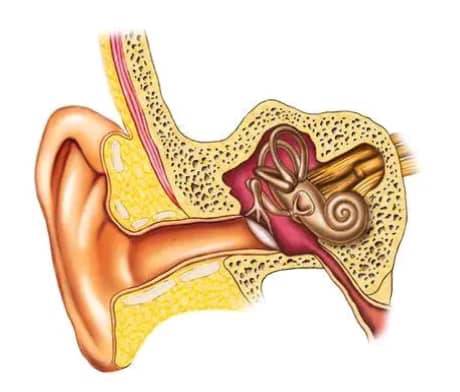We know that there are organs that are specialized to detect specific stimuli called sense organs or receptors. The main receptors in humans are the eyelids, ears, nose, taste buds, sensation, heat, and sensation.
Eye structure
Our eyes are located in small parts of the skull called orbits or eye sockets. Eyelids wipe dirt from them and protect them from dehydration. They spread tears on the eyes which contain substances against bacterial infections. Eyelids (eyelashes) prevent particles from entering the eyes. The structure of the eye can be divided into three major layers the sclera and the cornea are present in the outermost layer of the eye. White colors are given by the sclera to the eye. It is made up of thick connective tissue and besides protecting the internal parts of the eye, it also maintains the shape of the eye. The sclera on the front creates a transparent new one. The cornea allows light to enter the eye and also bends the light rays so that they come into focus.
 |
| structure of eye |
What is part of the inner layer of the eye that contains rods and cons?
The inner layer of the eye is sensory and is called the retina. It contains light-sensitive cells called rods and cones, and their associated neurons. Rods are sensitive to dim light, while cones are sensitive to bright light and therefore discriminate different colors. The fovea and optic disc are the illusory spots on the retina. Fo or Rajina has a cavity just opposite the retina and contains a large number of cone cells. This location is responsible for color recognition and sharpness. The optic disc is the point on the retina where the optic nerve enters the retina. Rao and no one else can be found at this place, so it is also called a blind spot.
 |
| The internal structure of eye |
When light from an object enters the eye, it refracts as it passes through the cornea, X-tumor, lens, and vitreous humor. The lantern also focuses this light on the rambling, resulting in an image of the rambling. Is. Rods and who are in the pic of a pic. Rods and who produce Naro Implasters in Aki Pukwu. These implants are brought to the brain where a feeling of viewing arises.
A pigment is found inside the rods called rhodopsin. When the rhodopsin sheds light, it breaks down to create a nerve impulse. In the absence of light, the broken products of the road wipe again making the road Wasson. Our body is made of road and listening to vitamin A and that is why vitamin A does not look good at night. This cute is called Night Blindness.
There is also a comment in the quiz called iodopsin. There are three major types of cotton and a special iodopsin and pan are found in each type. The curtains of the Conzes describe the three basic colors of the bush and one the red. If one of the types of quizzes does not work well, it is difficult to recognize the color. Such a person is not even able to distinguish between different colors. This disease is called color core ie color blindness and it is a genetic disease
Defects of the eye and how they are corrected
A change in the shape of the eyeball affects the function of the eye
 |
| images of myopia and hypermetropia |
Elongation of the eyeball results in bates. Such people cannot see distant things clearly. In Myopia the image of distant objects is obtained in front of the retina. Concave lenses can be used for this defect.
Hypermetropia (farsightedness)
Shortening the length of the eyeball causes defects. Such people cannot see near objects clearly. The picture of distant objects, in Hypermetropia, is obtained behind the retina of the eyes. A convex lens is used to treatment for this disease.
Works of Muslim Scientists
Ali Ibn Sina (1012-950 AD) was a famous Arab scientist. He loved the eye and wrote three books on his knowledge of surgery i.e. ophthalmology. He described 130 complaints of the eye and also 143 medicines for their treatment Suggested.
Ibn al-Baysham (1039-965 AD) was also an Arab scientist. He did important work on the principles of eye and vision. He is considered the founder of optics, the science of the behavior of light. In his book, 'Pitaks' explained and proved the modern theory of vision. In his book, he discussed the medical and surgical treatment of the eye. He proposed many improvements in eye surgery and described the process of seeing, the structure of the eye, imaging in the eye, and the visual system. Ibn al-Hayshim also described the principles of the pinhole camera.
For information
Too much light in the eye can damage the retina, and too little light makes it difficult to see. The human eye has 12.5 million rods and 17 cones
Have you seen the glowing eyes of cats and dogs at night? His intuition There is a tapetum behind each eye. Nano reflects light The doer is a p.
Color vision and recognition are essential for pilots to identify aircraft position lights, light-gun signals, airport beacons, landing signals, and charts. Be able to recognize chart symbols (at special times). Pilots must be aware of and understand these colors in order to be safe and Can do their duty together.
An owl cannot see during the day. This is due to the lack of cones (which receive and sense bright light) in his eyes. But with more amounts of rods, it has more power to see at night. All such animals that search for their prey at night have this characteristic.

.jpg)

.jpg)


